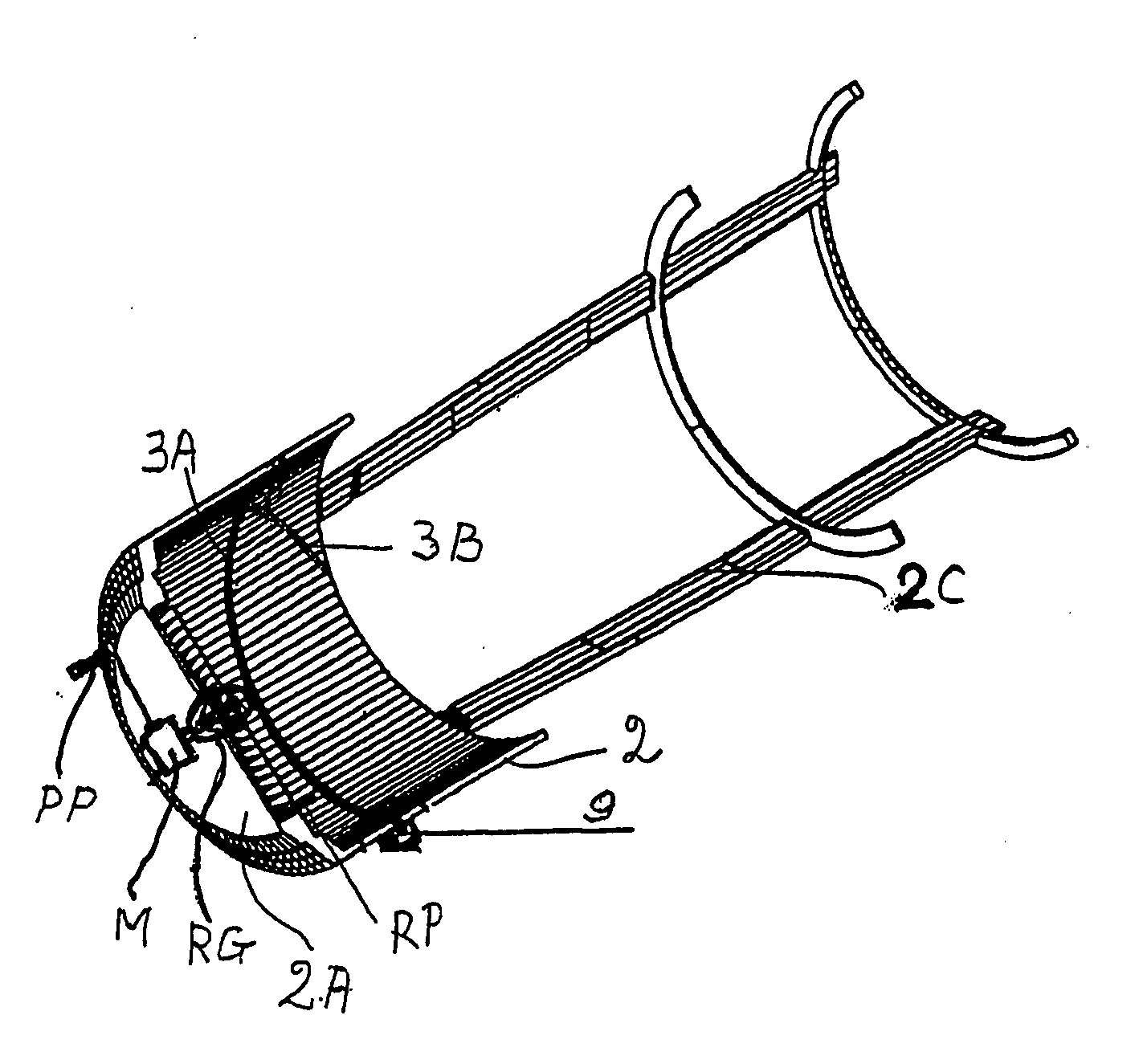System for ejecting a spin-stabilized space flying body
- Summary
- Abstract
- Description
- Claims
- Application Information
AI Technical Summary
Benefits of technology
Problems solved by technology
Method used
Image
Examples
Embodiment Construction
[0025]FIG. 1A shows an ejection tube 2 with a bottom chamber 2A from which a cover 2B shown in FIG. 2 has been removed. For weight reduction purposes, the ejecting tube is constructed as short as possible. For the same purpose a guide frame 2C is connected to the ejecting tube 2. The ejection tube 2 has an inwardly facing tube wall provided with a guide track or groove section 3A and a further guide track or groove section 3B. The flying body 1 comprises a corresponding first guide track or groove section 4A and a second guide track or groove section 4B. A drive hole DH for engagement by a withdrawable and rotatable drive pin of a motor M or of a reduction gear RG is provided in the bottom of the flying body 1 as shown in FIG. 1B.
[0026] Guide balls or spheres 5 are movable in the guide tracks or grooves 3A, 3B and 4A and 4B. The guide ball 5 in FIG. 1B is shown only for illustration purposes because according to the invention the balls 5 are retained in the ejecting tube 2 as will ...
PUM
 Login to View More
Login to View More Abstract
Description
Claims
Application Information
 Login to View More
Login to View More - R&D
- Intellectual Property
- Life Sciences
- Materials
- Tech Scout
- Unparalleled Data Quality
- Higher Quality Content
- 60% Fewer Hallucinations
Browse by: Latest US Patents, China's latest patents, Technical Efficacy Thesaurus, Application Domain, Technology Topic, Popular Technical Reports.
© 2025 PatSnap. All rights reserved.Legal|Privacy policy|Modern Slavery Act Transparency Statement|Sitemap|About US| Contact US: help@patsnap.com



